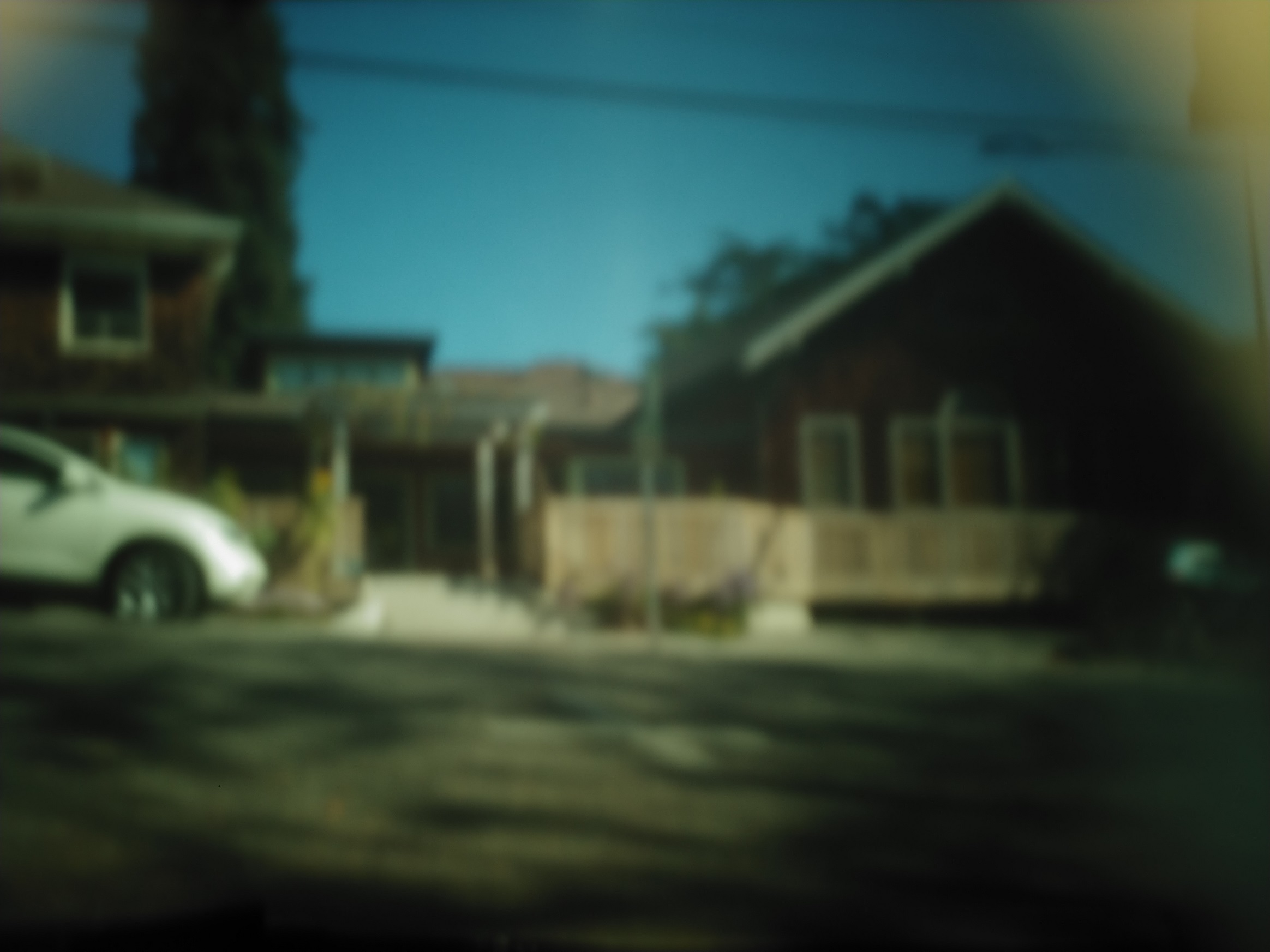Project 2: Building a Pinhole Camera
Jesse Gao (cs194-26-afi) and Daniel Zheng (# cs194-26-acj)
Overview
When a normal white screen is exposed to a lit environment, it would show up as just a white screen because of all the light scattered over the screen can come from any direction. A pinhole camera only allows light to shine through a tiny hole, which forms a fairly coherent, upside down image on a screen inside the camera. The image reflected on the screen inside the pinhole camera can then be captured by a long exposure camera. The size of the pinhole produced different results; larger holes produced blurry but very bright images while smaller holes produced sharper and dimmer images.
Design
The camera consisted primarily of a cardboard box with its interior completely covered with black paper except for the side designated to be the screen, which was covered with white paper.
A large hole was cut on the side opposite of the screen. A sliding piece of black paper with pinholes of different sizes was then added to cover the large hole to form an adjustable “aperture” for easy changes. Next to the pinhole was the hole for the phone camera, and a holding apparatus for the Android phone we used to capture the screen digitally. It holds the phone nicely. The phone that we used was an LG V30, which has a manual mode camera setting that can do up to 30 seconds of exposure time and can set the ISO from 50 to 3200.
The box was then completely sealed with black duct tape to prevent additional light from getting in through anywhere but the pinhole.


Captured Results
The sizes of the pinholes were 0.1 mm, 3 mm, and 5 mm. We tested the camera on VLSB to determine which size worked the best.
The bigger the pinhole was, the brighter and blurrier the image produced. The smaller pinhole produced sharper, dimmer images, which makes sense because less light can enter through the hole through any distinct point from the scene we want to capture, producing refined details but a darker image. However, the darker image meant that we had to turn up the ISO setting on the camera, which created a lot of noise that lowered the image quality.
We found that 3mm generally worked the best, not too noisy and not too blurry.
Here are the results of the captures. All images were produced with an exposure time of 30 seconds.
.1mm

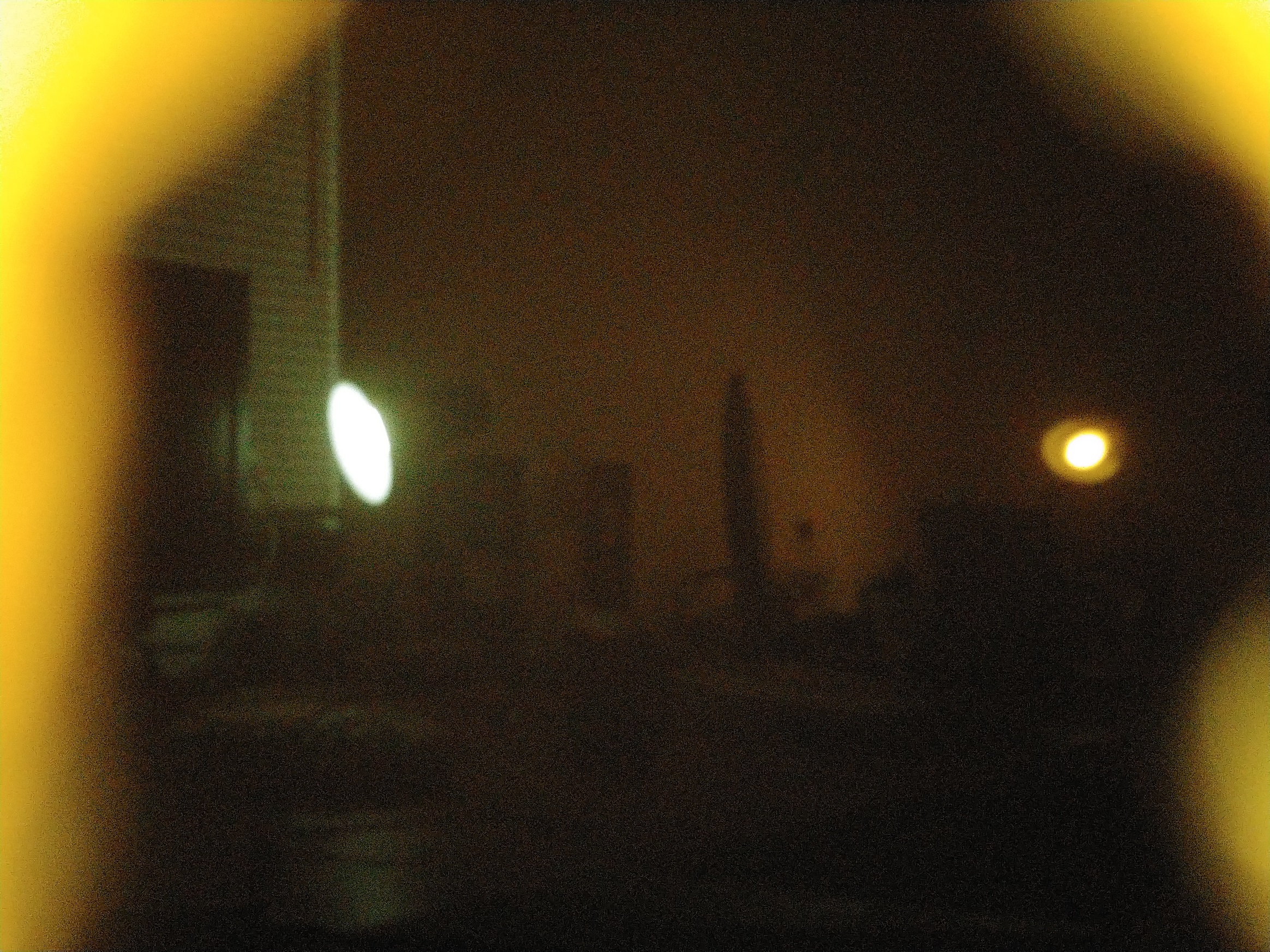
3mm
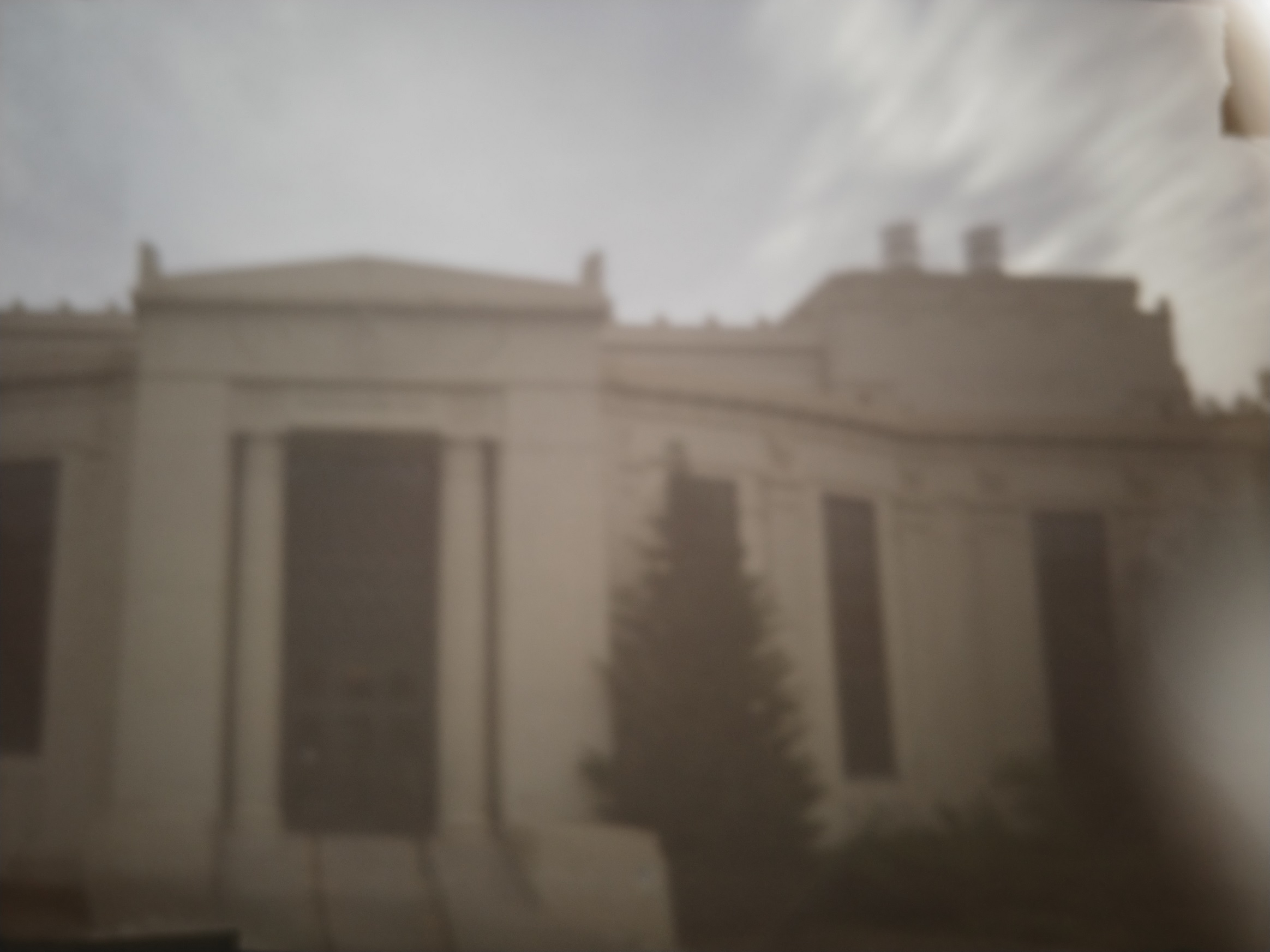
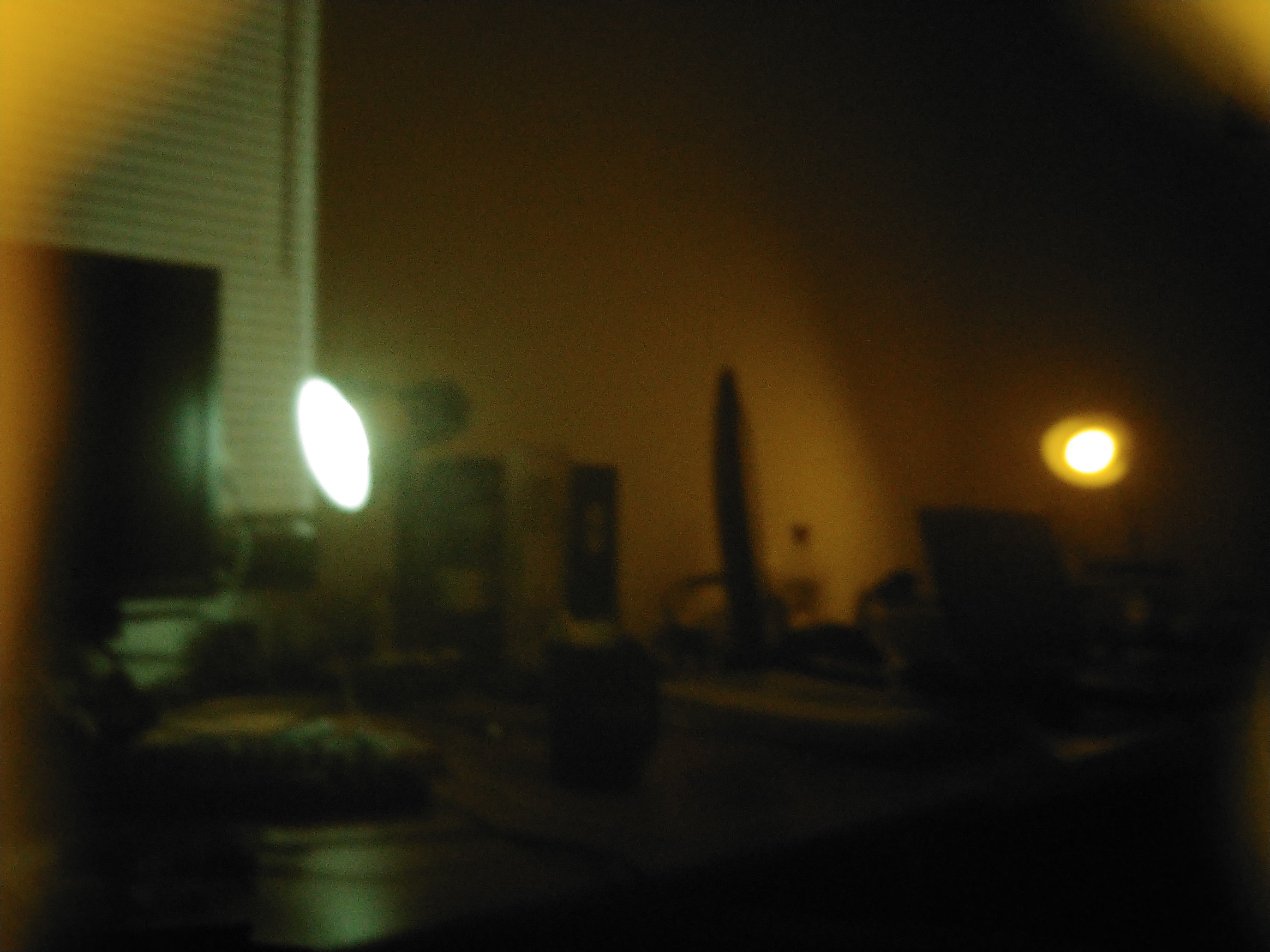
5mm
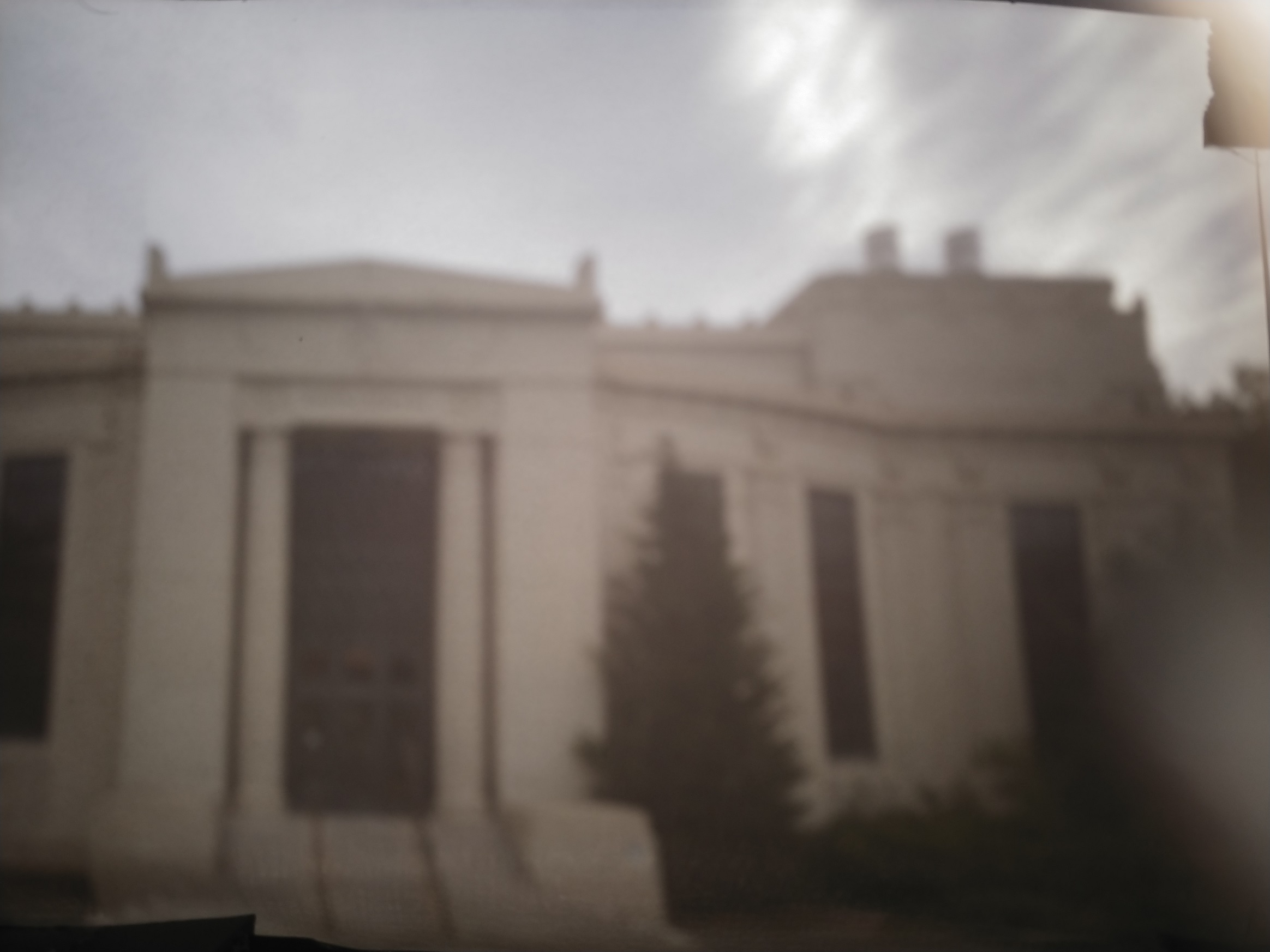
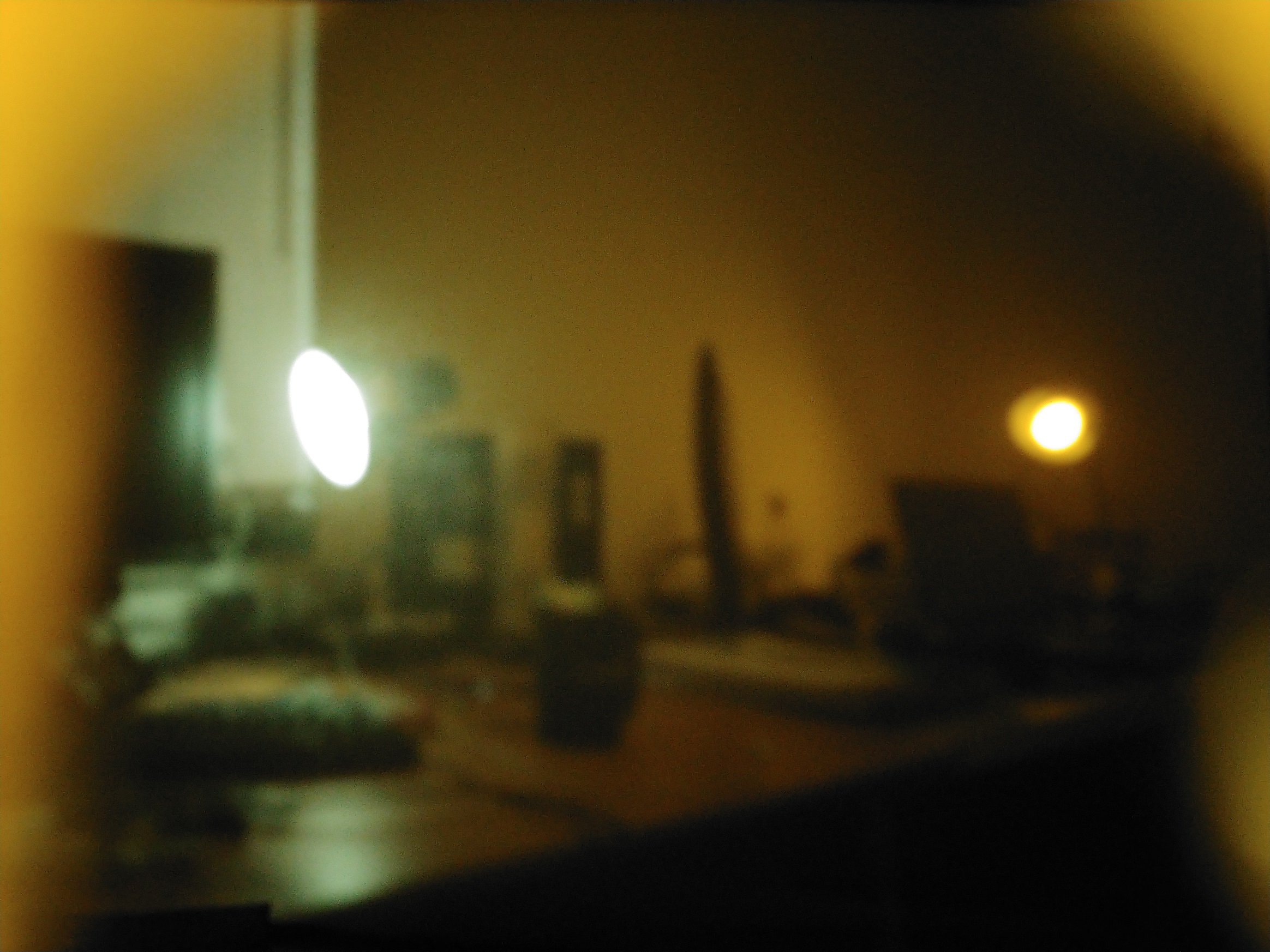
These are more captures done with the 3mm pinhole.



